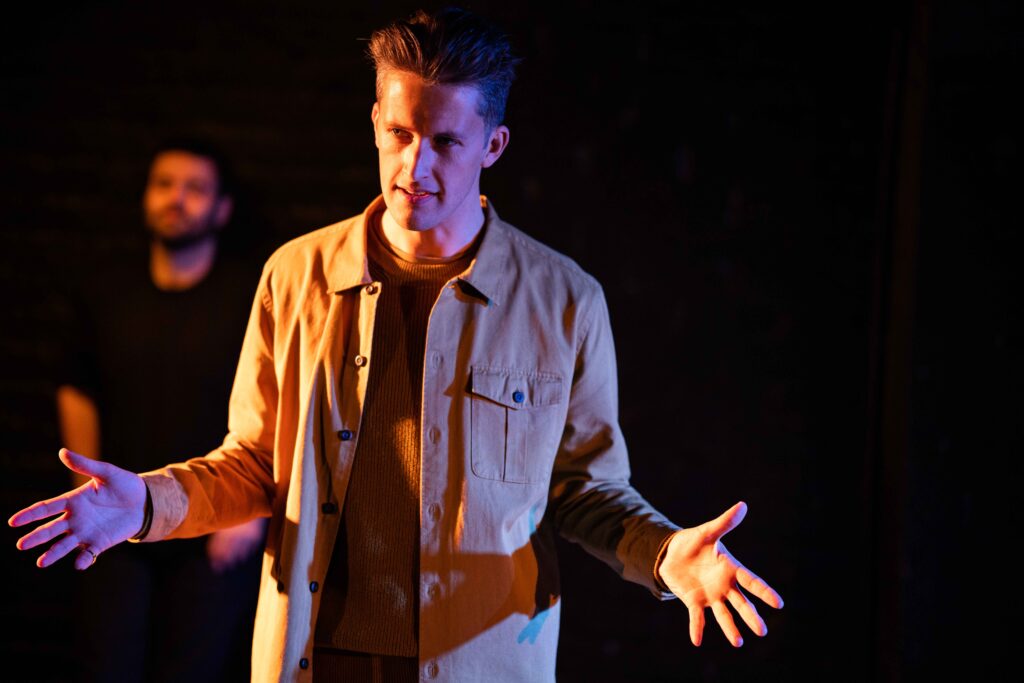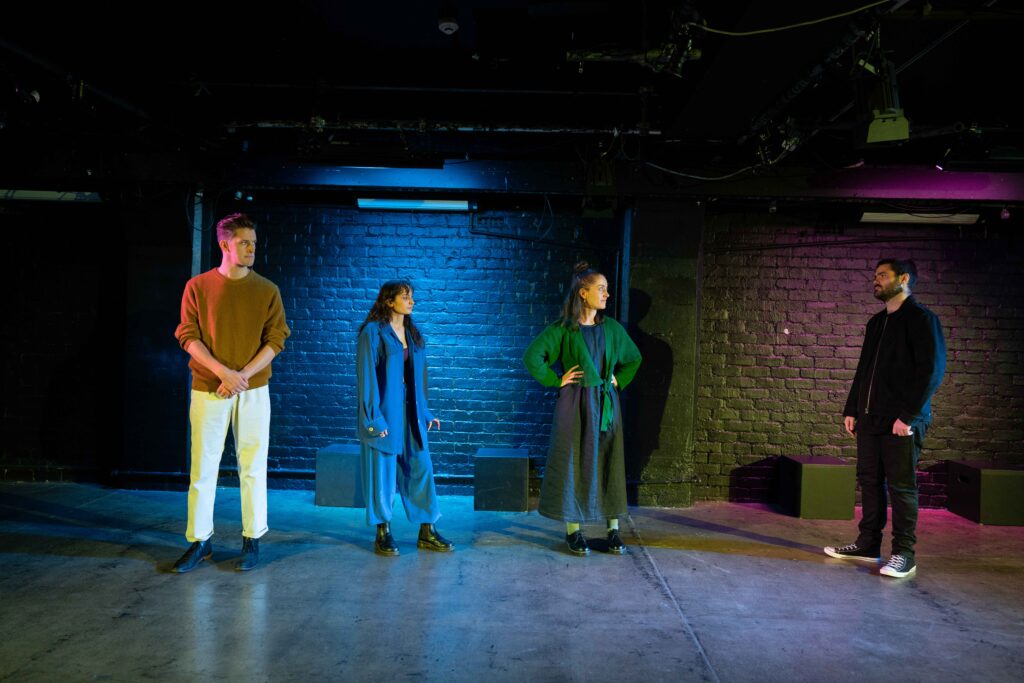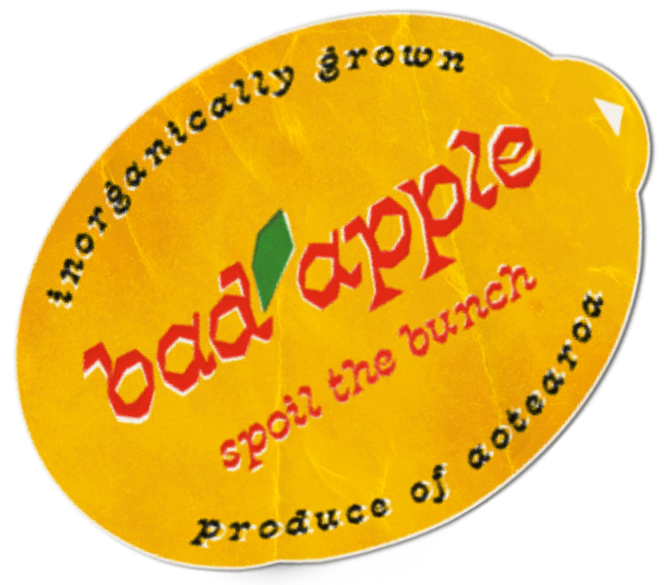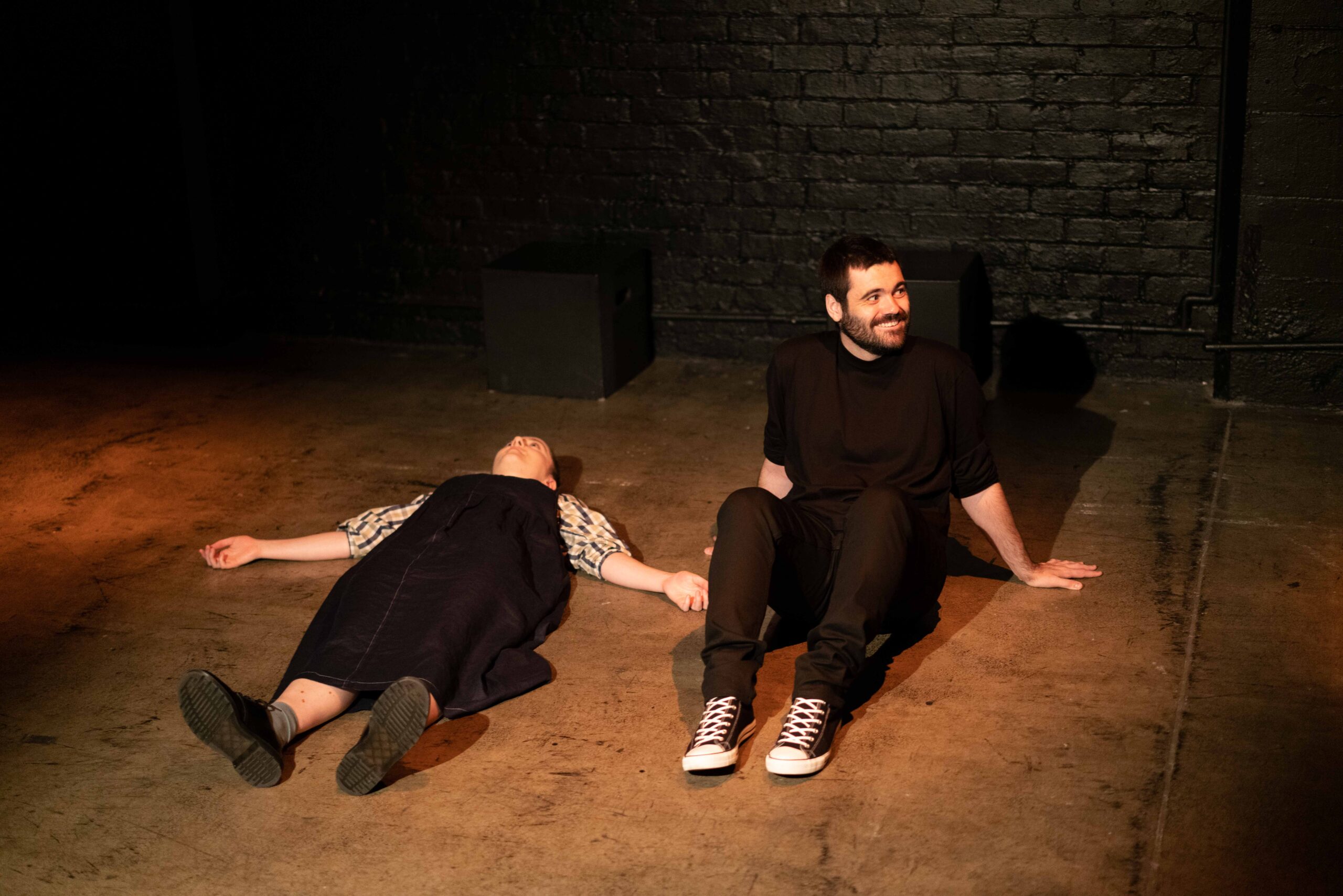It starts with ticking and a ruminating mind. Voices, faces, bodies, hold light in the void of a stark, shadowy stage. The only visible props are four boxes pushed against a wall. We, the audience, wait in the dark while the play avoids a no-lube approach, moving at a languid pace instead. Slowly we’re introduced to the four finalists for the M.K. Archer Award and what they plan on bringing to their projects. The rhythm picks up as the panic of the speculating unknown begins unravelling each artist, blurring them. Eyeing up the lay of the arts landscape, one of the four, Howie (played by Dan Goodwin), says, “they look like the tag left on a new pair of jeans.”
When walking into a darkroom, your pupils dilate to take in more, to find the outlines of shapes sharpening enough to be known and the potential to be warped. Without a red light to control the developing photograph, it might become ruined. This is an imagistic echo that weaves through the competing poetic monologues of Champions. Written by Isabella McDermott, the comedic use of communication slippages creates a choppy, edited effect embodying a theme of perceiving vs. being perceived.

Once they’ve all met, Fraser (played by Alex Walker) attempts to convince the others they should split the prize as a nah bo to the arts institutions. Claudia (played by Bronwyn Ensor) shuts them down. This is where the characters first notice the speculation of each other mismatching the reality of them. Howie goes over and over how lucky they are to be there.
A compulsory dinner at the awards patron M.K. Archer’s house cautions the stage with red light. Here the artists fumble over themselves and each other, getting drunk and rowdy. When Emmy (played by Mirabai Pease) goes to the bathroom to check out the small Picasso rumoured to be in there, the stage is split by a garish hospital light. Commenting on how small the painting is, Emmy is groped from behind by an (unseen) M.K. Archer.
The four artists represent elemental archetypes: the depressively ethereal sculptor (water), the anxiously unassuming photographer (air), the explosively dynamic videographer (fire), and the rigidly traditional painter (earth). While the first two artists deal with an internalised struggle of power and control over their personal autonomy, the latter two artists face external enforcements of power and control that attempt to dismantle their sense of self. They seem to operate as a kind of compass for and to each other.
“Champions is crack-up, lyrical, and poignant, exploring how we evaluate success and ambition, continuing to ruminate long after the lights turn on. ”
At some point, Emmy sits against the wall while Claudia leans against it. They’re like faders on a sound mixing board; as Emmy shrinks, starving to control their pain, Claudia basks in their growing confidence, allowing themself to be excited, hopeful, and reflective. Claudia mentions that on first meeting them at art school, Emmy’s braces were like “a mouthful of stars.” Later on, wishing to jump into Emmy’s mouth and see as them, Claudia, blind to their friend’s trauma, highlights another slippage of perception.

An obsessive energy exists between Claudia and Howie. They are described as mirrors, use mirror/mirroring energy, and often monologue in pairs. They embody the ways we conceptualise a work and intuit the experience. Emmy and Fraser express the chaotic charisma of a work and the learned structures enforced upon it. Moving more elliptically, they’re committed to manifesting their creativity to build (upon) a legacy in and of the world at all costs. Maybe this wonky compass invites us to explore our own mistakes from each direction.
Corrupted projections of success link to the perceptions of power in Champions. While very few artists are free from some desire to sparkle, connect, achieve, and girlboss, the play seems a little cynical about creating within a competitive framework that homogenises creative success even as it helps to reconcile each artist’s relationship to their art. How might we moderate creative spaces more holistically?

There’s a thread of titanium white in the costuming; Fraser’s forever pants, Emmy’s post-assault t-shirt, and the soles on Howie’s chucks. This could be a flash of a camera, the inversion of a symbolic purity, the darkest parts glowing spoon-silver in the photo negative. Emmy fights against sexual assault and an eating disorder, Fraser cracks under the weight of expectation from an abusive dad and Howie obsessively examines the other artists to avoid being seen. Of all four, Claudia is the only character dressed in full colour. Blue and yellow Gingham sleeves symbolically refract the light as Claudia is absorbed in their creative alchemy. Yet even she misses things. The night before the awards ceremony, Fraser remarks on Claudia’s sculpture, saying, “the lanterns hang at different levels. They’re more like prisms.”

Champions rests on an axis of ambition/inhibition. The developing red light at the two awards dinners alludes to what kind of photo will be shown at the end. On stage, the flash of the camera captures the versions of the artists we thought we knew and the corruptive powers we think we can avoid, asking, what might we compromise to win? Champions is crack-up, lyrical, and poignant, exploring how we evaluate success and ambition, continuing to ruminate long after the lights turn on.
Director: Harriett Maire
Playwright: Isabella McDermott
Producer: Tate Fountain
Lighting Designer: Michael Goodwin
Music & Sound Designer: Lachie Oliver-Kerby
Stage Manager: Hannah Brown
Cast: Bronwyn Ensor, Dan Goodwin, Mirabai Pease, Alex Walker
Featured photos by John McDermott.



